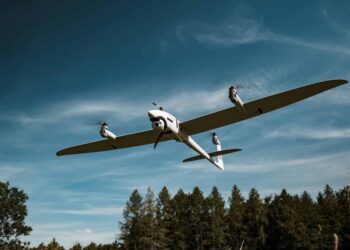, Personnel of 800 Naval Air Squadron have completed their tour on Operation Herrick in Afghanistan and returned home to their base at RAF Cottesmore in Rutland.
The Squadron's Harrier GR7 aircraft, however, remain in theatre with No 1 (F) Squadron, also based at RAF Cottesmore as part of Joint Force Harrier, who have taken over 800 Naval Air Squadron's duties.
The period since 800 Naval Air Squadron took over the British fast jet commitment in Afghanistan on 1 October 2006 has marked a significant chapter in the history of the Royal Navy's oldest Naval Air Squadron.
It is the first time a Naval fast jet squadron has been on operations since the campaign in Kosovo in 1999 and the first time ordnance has been delivered from a Naval jet in anger since Bosnia, over a decade ago. This has all been achieved within six months of the Squadron's formation as a Harrier GR7 unit.
Second Sea Lord Vice Admiral Adrian Johns, who is also head of the Fleet Air Arm, said:
“800 Squadron have achieved a tremendous amount in their deployment to Afghanistan, demonstrating again the professionalism, dedication and team work that is the hallmark of Naval Aviation. They have made a major contribution to the operation, providing outstanding support to the Royal Marines and soldiers on the ground.”
Joint Force Harrier is in Afghanistan providing Close Air Support to the ground troops of the International Security Assistance Force. 800 Naval Air Squadron's deployment coincided with that of 3 Commando Brigade Royal Marines on the ground.
800 Naval Air Squadron were based in Kandahar Airfield in the south east of Afghanistan. Sorties have ranged far and wide, from Herat in the north west to operations close to the Pakistani border in the south and from the massive mountains of the Hindu Kush and the Himalayan foothills in the north east to the local provinces of Kandahar and Helmand, sometimes supporting Canadian troops only twenty miles from the airfield.
They participated in a number of major operations over the October to January period, the overall aim of which has been to support the Government of Afghanistan in its goal of providing peace, governance, security, stability and redevelopment in the region. Yet there has been – and remains – a need to deliver weapons in support of troops on the ground when they come into contact with enemy forces.
To that end 800 Squadron dropped 540 lb (245 kg) bombs and 1,000 lb (454 kg) laser-guided bombs as well as firing air-to-ground rockets. These have been delivered in clear blue skies, dust storms or heavy rain and low cloud. The Harrier GR7's versatility in this varied and challenging environment several thousand feet above sea level has been confirmed.
Throughout the deployment use has been made of the air-to-air refuelling tankers in theatre, both American and British. This capability not only permits sorties to be flown to the extremes of the country but also extends the time air cover can be provided for the troops in closer areas such as Now Zad, Kajaki, Musa Qaleh, Gereshk and Garmsir.
Although Close Air Support has been the focus of 800 Squadron in Afghanistan, occasionally other missions have been undertaken. The Harrier GR7s have flown a number of sorties on Highway Patrol, ensuring that Afghanistan's long, and in many cases remote, transport arteries are kept open for the lawful activities they are meant for. The high quality reconnaissance images available from the Harrier's sensors have been put to good use to aid the intelligence gathering campaign in theatre.
After a period of leave, the Squadron will be back to work at RAF Cottesmore before re-embarking on HMS Illustrious in Spring. The Fleet Air Arm will not be absent from Afghanistan for long however, as Naval Harriers are due back at Kandahar towards the end of 2007.
Germany says adding explosive drones to weapons arsenal
Germany said Friday it would buy explosive drones for the first time as Berlin boosts investments in its armed forces...









